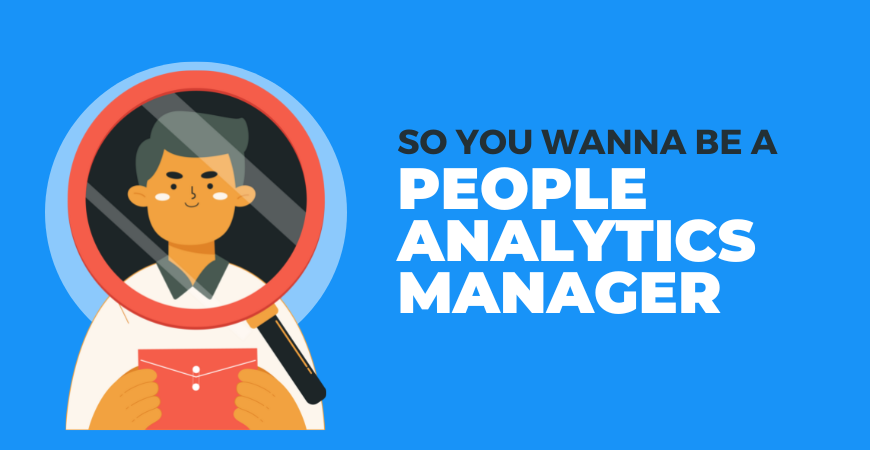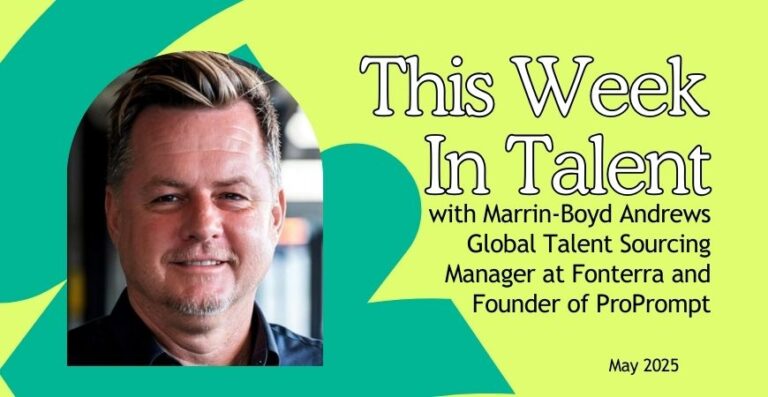Looking for a TA career change but not too sure how to get there? Our ‘So you wanna be a…‘ series takes a look at some of the more niche TA roles and digs deep into the who, how, and why behind them. We chat with some of your favourite TA leaders in that space to find out how they got started, what their role really looks like, and what tips and tricks they have for other TA superstars looking to get a foot in the door.
In this issue, we sat down with Natalie Dunlop, Talent Analytics Manager @ Deloitte, to find out what really goes on in the life of a People Analytics Manager.
First things first, what do we mean by People Analytics?
People Analytics is a relatively new area of HR. It only came into realisation in the 2010’s, really finding its feet and adding value in the last 5-10 years. While HR is generally known as an area that deals with people, the introduction of HR specific tools and technology meant we were able to collect a wide range of data points to help us understand our workforce and their sentiment.
People Analytics is the practice of analysing those data points to answer valuable business questions and use insights to inform leadership decisions and company direction. Something as simple as understanding the diversity of an organisation can help senior leadership create initiatives which are relevant, meaningful and drive performance.
What led you to become a people analytics manager?
When I started my career in HR no one was talking about analytics or even how people data could help answer some of an organisations biggest challenges. However, I soon realised that the part of my job I enjoyed the most was when I was in excel spreadsheets playing with formulas. I became vocal about my love of data and soon my teams were coming to me as the Excel expert to help them understand their data and find trends.
The last few years has seen some amazing growth in the field of People Analytics; where I was usually the lone Analyst in an HR team, I’ve been able to grow the function and now have a team of Analysts working on specific questions across different parts of the employee life cycle.
What does your day-to-day involve? What about the bigger picture work?
Day-to-day can vary greatly in the life of a People Analyst mainly due to organisations still finding their feet in this space. It also depends on the size of your team, with smaller teams juggling reporting and ad-hoc data requests with more advanced analytical projects. You could find your day includes a wide range of tasks such as extracting excel reports from HR systems, teaching other HR practitioners how to use and understand data, cleaning and joining data sources to find valuable insights, using data visualisation tools to create interactive dashboards for the business, or presenting the findings of your analysis back to the leadership team. Sophistication of data specific tools and technology is being enhanced everyday but even in well established organisations you could still be relying heavily on Excel.
The bigger picture is all about moving the maturity of our People Analytics function forward and getting buy-in from the Senior Leadership team. Different organisations will be at a different stages of the Maturity Model so understanding where you are, where you want to go and what you need to get there should form the basis of your People Analytics strategy.
What are some of the biggest challenges you come across in your everyday work?
People are so much more than numbers on a page. Sure, you can measure the number of applications you receive, how many new starters and leavers you have and how often do people get promoted, but if you really want to understand how people feel about their role, their leaders, or the wider business then we need to work out how to measure what people think. The challenge isn’t in capturing that kind of data – most organisations have onboarding and exit surveys, feedback channels or engagement measures. The challenge is how do we utilise that qualitative data so we can get it to actually tell us something of value. Can we pull other data points in to provide more context? Do we have the technology to analyse the data properly? How can we pull insights out of commentary? This can lead to gaps in our analysis, where we might not have the data we need to measure a problem, or we aren’t able to use the data we have.
There are also system limitations which hinder high quality data being captured. If we want to measure where our most successful candidates are coming from we first need to be able to track where each application originates. If a system hasn’t been properly configured this can lead to errors in the data capture process. No analytics project will have a perfect and complete set of data. Getting comfortable with what is available and knowing where the gaps are is a great first step in the process. Thinking outside the box is almost a must in this role and could lead to some really innovative solutions!
What do you love most about your job?
It is really satisfying seeing your dashboards or analysis being used as talking points in the wider business. To know that your insights are leading the business to make really forward thinking decisions about our people is a great feeling. I also have a bit of a niche love of my role, that feeling you get when you crack a complex calculation you have been working on. It’s such a sense of accomplishment even though no one will ever see it outside your team!
How does the People Analytics Manage work with the HR team and wider business?
My main goal as a People Analytics Manager is to have a partnership with the HR team. The last thing you want to do is create insights in a silo and roll them out to a business who isn’t engaged with your message. Your findings might be really interesting but if they aren’t solving a specific business problem or answering a relevant question, your work will start gathering dust. The best way to find out what is important to the business is to work hand-in-hand with the HR team. This also means educating them on what your team can achieve. Make sure the Talent Acquisition team know what kinds of questions you can help to answer so when they are discussing recruitment strategies with their stakeholders they know when to get you involved in the conversations.
What type of qualities do you think make a good people analytics manager?
You really need to be a champion for People Analytics. Traditionally, data isn’t a comfortable place for HR practitioners to play and you will need to bring the wider HR team along on the journey. Education is key, and being able to translate the analytical terminology and breakdown data concepts for different audiences will mean greater confidence of your teams output.
You also may find you need to be somewhat of a ‘Jack of all trades, master of none’. For example, I might not know how to code in Python or write complex SQL but I understand the concepts enough that I can advise on what the team can accomplish.
Lastly, you need to be able to stay focused on the bigger picture, try not to analyse data for the sake of it but link your work back to specific business questions. Make sure your team’s analysis is adding value!
The last two years have been tough for anyone working in the talent acquisition space. How has a global pandemic, frequent lockdowns, and a move towards people wanting more hybrid work options impacted the type of analytics you are measuring right now?
If anything, the last 2 years have supercharged the need for People Analytics.
People Analytics was picking up momentum pre-2020 – businesses could see the value and were slowing starting to invest in the skills – but the pandemic brought us front and centre. Very much like ‘working from home’ you could say! Leaders needed to be able to measure their employees’ engagement while at home; were employees feeling connected? Did they need specific support for their wellbeing? Then we had the threat of the ‘Great Resignation’ and all our focus was on how to retain staff. What was important to people changed and so businesses needed to change their working models to adapt to the new hybrid ways of working.
Now that it seems we are on the other side, we have a low unemployment rate and the competition for quality candidates is fierce. AI tools, targeted advertising campaigns ,and internal mobility is all on the table and the People Analytics team have a role to play in each initiative to measure progress and success.
In saying that, the world of People Analytics is always evolving with new technologies, ways of working and employee sentiment. It is an exciting space to be in if you love data and innovation!
Natalie’s Cheat Sheet for Aspiring People Analytics Managers
What are some of the actionable things you can do if you want to be a People Analytics Manager? Here are some suggestions from Natalie of who to follow, what to use, and where to seek out your info.
Do you have any industry experts or influencers you follow?
Josh Bersin and David Green from Insight222. David just co-Authored a book called Excellence in People Analytics which is a great place to start if you want to understand how to build the foundations of a People Analytics function.
Absolute must-use productivity and tech tools to make your life so much easier?
I live in Tableau software. While data visualisation is definitely the more creative part of the job, the place you will spend all your time is cleaning and manipulating the data. Tableau has a data preparation tool call Tableau Prep Builder and I am in that software almost every day. There are other tools out there that organisations might use such as Alteryx or MS Power Query, regardless, these tools are amazing when it comes to joining complex data sets and making sense of things. The best thing is it doesn’t matter if your data is in Excel or in a cloud somewhere; these tools can connect to a wide range of data sources making it easy to connect data across your organisation.
Newsletter and event recommendations to keep the brain ticking over and your network fresh?
Follow David Green on LinkedIn. David sends out a monthly round up of the best People Analytics related articles that have been published and saves you from trawling the internet for current themes. He also hosts a great podcast called Digital HR Leaders and has interviewed some really interesting People Analytics leaders from around the world!
Is there a specific niche area of recruitment you’d like to know more about. Email us and let us know.







